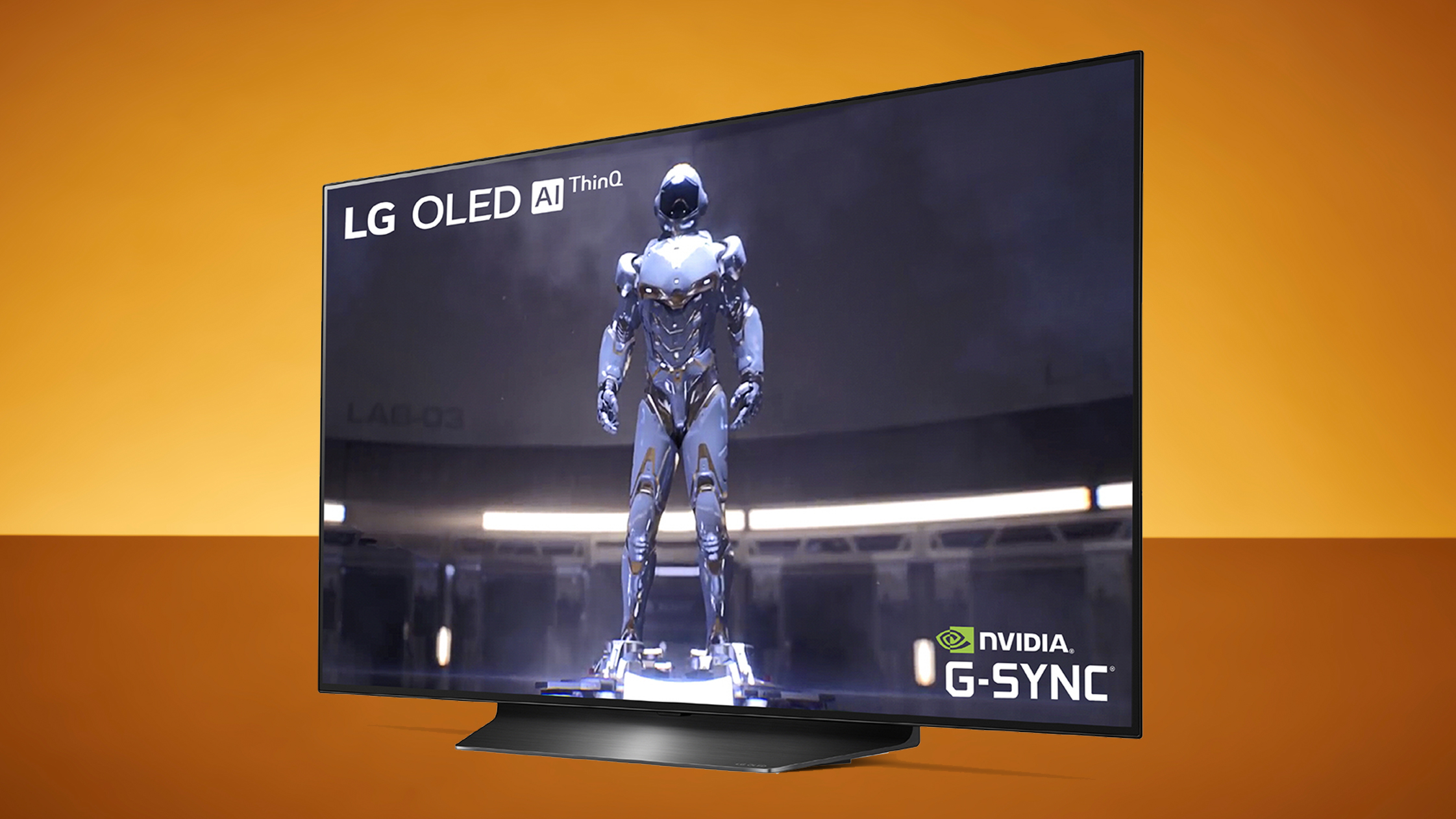

Today, LG is beginning to roll out new firmware for its 2020 OLED TVs that will improve an issue they have with black levels when Variable Refresh Rate is enabled. The update will land in the UK and US first, with other countries to follow.
Variable Refresh Rate is a relatively new feature on TVs, and the good news is that if you haven't heard of it, there's a strong chance the issue hasn't been affecting you anyway. It specifically relates to gaming, and currently only works with the Xbox Series X, Xbox Series S, Xbox One X and compatible PCs. Sony has always said that VRR will be a feature on PS5, but it's not active currently – an update to enable it is promised. Basically, VRR helps to make sure games look clear and smooth even if the framerate stutters – here's our full VRR explainer.
The problem the TVs are having is that OLED's famously deep black levels aren't so black when VRR is functioning, and there may be some flickering. Deep blacks look grey, and it means the overall dynamic range appears more limited, which kind spoils the point of paying the premium price that the best OLED TVs command.
- Disney Plus slated to recast Luke Skywalker in new Star Wars shows
- Disney Plus and Netflix in the firing line as NOW TV upgrades itself
- Here's when Nintendo Switch Pro is coming out
FlatpanelsHD reports that the new firmware will provide tools to improve the problem, but it'll take some manual tinkering from the owner: the update offers a 'Fine Tune Dark Areas' menu in the settings, which you can use to manually push the look closer to what you'd expect. Alternatively, you can also disable VRR on the device you're connected to, which will give you the more standard look, but that's not ideal either – there's a reason it's been a hotly anticipated feature of the new consoles.
The update is for LG's 2020 OLED TVs, including the LG CX, LG BX and LG GX. The original issue also affects its 2019 OLED sets, including LG C9 and LG B9, but we don't yet know when an equivalent update might arrive for them.
Why is this such a problem?
The reason LG can't make a fix just happen in the background is that the issue appears to relate to the OLED panels themselves, rather than just the processing or other software settings. A statement from the OLED Association, reported by FlatpanelsHD, offers the details:
"Gamma for OLED is optimized and fixed for 120Hz by establishing a fixed charging time for OLED sub-pixels. VRR is used when the frame rate is less than 120 Hz. When the OLED TV uses framerates less than 120Hz, the gamma curve is inconsistent with the frame rate … Therefore, the lower frame rates results in sub pixels that are overcharged, causing flickering of dark gray images, which is noticeable for dark images rather than bright ones, because human eyes are more sensitive to low gray colors. LGD will likely solve this problem establishing multiple gamma curves optimized for lower frame rates."
Sign up to the T3 newsletter for smarter living straight to your inbox
Get all the latest news, reviews, deals and buying guides on gorgeous tech, home and active products from the T3 experts
In case that seems like gibberish, here's the gist: LG's OLED panels have inherent brightness management that's tied to the refresh rate (ie, how often the screen updates the image). Normally, that works fine, because basically all video sources fit neatly within the default refresh rate. But the whole point of Variable Refresh Rate is the 'variable' part, and so a video source with VRR doesn't fit so neatly. That means the built-in brightness management can't do its job correctly, and the result is that things that should be dark look grey.
So this problem is built into LG's OLED displays, and LG Display is the only manufacturer of TV OLED panels. This hasn't been a problem in other OLED TVs so far because LG is practically the only one to support VRR. But that all changes in with 2021's TVs, so we'll have to see whether new models from Sony, Philips and Panasonic as well as LG still have issues, or whether LG Display has updated its panel production to improve things.
Matt is T3's former AV and Smart Home Editor (UK), master of all things audiovisual, overseeing our TV, speakers and headphones coverage. He also covered smart home products and large appliances, as well as our toys and games articles. He's can explain both what Dolby Vision IQ is and why the Lego you're building doesn't fit together the way the instructions say, so is truly invaluable. Matt has worked for tech publications for over 10 years, in print and online, including running T3's print magazine and launching its most recent redesign. He's also contributed to a huge number of tech and gaming titles over the years. Say hello if you see him roaming the halls at CES, IFA or Toy Fair. Matt now works for our sister title TechRadar.

